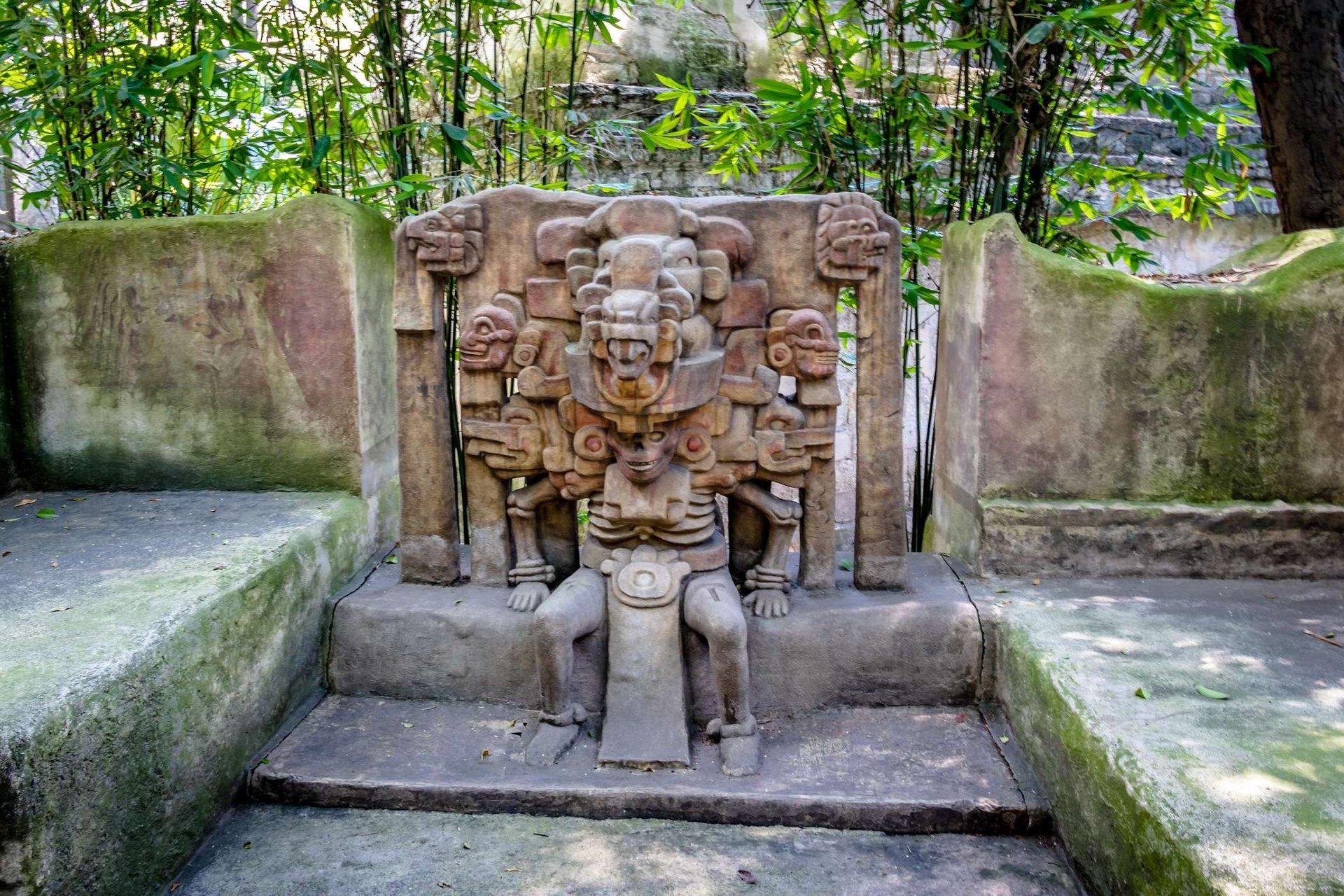
The Secret Language of Cacao:
What Ancient Traditions Reveal About Its Spiritual Power
Cacao's Mystical Legacy
Imagine the rich, earthy aroma of cacao wafting through a sacred grove, its bittersweet essence whispering tales of ancient rituals and divine communion. Cacao, the heart of chocolate, transcends its modern confectionery role, weaving a tapestry of spiritual and cultural significance across millennia. From the lush rainforests of Mesoamerica to the quiet corners of contemporary homes, cacao has been a bridge between the earthly and the divine, a messenger of the gods, and a catalyst for heart-centered transformation.
Cacao as a Sacred Messenger
In the heart of ancient Mesoamerica, the Mayans and Aztecs revered cacao as a divine gift, a conduit to higher consciousness. Historical accounts reveal cacao's presence in Mayan creation myths, such as the Popol Vuh, where it was linked to the formation of humanity and the maize god, symbolizing fertility and sustenance. The Aztecs used cacao in ritual offerings, reserving its consumption for nobility and priests, and even employing it as currency, underscoring its sacred and economic value. Archaeological evidence, like ceramic vessels with theobromine traces dating back to 1900 BC, confirms its ancient ritual use.
Decoding the Hidden Meaning Behind Cacao Rituals
Cacao ceremonies are rich with symbolism, each element a thread in the tapestry of spiritual connection. Fire, used to roast the beans, represents transformation and purification, while water, essential for preparing the drink, symbolizes life and renewal. Breathwork, often involving the traditional molinillo to froth the cacao, connects participants with its spirit through mindful breathing. Known as "the food of the gods," cacao's name, Theobroma cacao, reflects its divine association, believed to facilitate communication with higher realms. This aligns with heart-centered spirituality, opening pathways to love, compassion, and unity, as seen in modern adaptations of these ancient practices.
Energetic and Alchemical Properties
Cacao's influence extends to the body's energy centers, particularly the heart chakra, an energy center linked to love and connection. Modern spiritual practitioners and energy healers suggest it activates and balances this chakra, promoting emotional healing by releasing blockages and enhancing self-awareness. Theobromine, a key compound, is said to stimulate the heart, widening blood vessels and fostering a sense of openness. Many report feelings of joy, clarity, and inspiration, making cacao a tool for heart-centered spiritual practices (The Conscious Club).
Mystical Encounters with Cacao
Anecdotal experiences reveal cacao's potential for profound, non-hallucinogenic insights, akin to other sacred plant medicines. Participants often describe emotional releases, deep connections to nature, and transformative realizations. One shared, "I felt my heart expand like never before, overwhelmed with love and gratitude," while another noted, "Cacao helped me access parts of myself I didn't know existed, shifting my life perspective." These stories, while subjective, highlight cacao's role in personal growth and spiritual exploration, offering a gentle yet powerful experience.
Bridging Ancient Wisdom with Modern Spirituality
Today, contemporary seekers, yogis, and spiritual practitioners are weaving cacao into their daily lives, from group ceremonies to individual meditation and manifestation rituals. It's seen as an accessible, legal plant medicine, providing a natural means to connect with inner selves and the universe. Morning rituals of drinking cacao with intention, or using it in meditation to enhance focus, reflect this integration, bridging ancient reverence with modern mindfulness.
Comprehensive Exploration of Cacao's Spiritual and Cultural Symbolism
Historical Context and Sacred Significance
Cacao's journey began in the Amazon rainforest, with evidence of domestication by the Mayo-Chinchipe culture in Ecuador around 3300 BC, spreading to Mesoamerica where it was embraced by the Olmecs, Mayans, and Aztecs. The Olmecs, around 1900-1500 BC, were among the first to consume cacao as a drink, treating it with mystical properties. For the Mayans, cacao was integral to their mythology, featured in the Popol Vuh as part of creation stories, with humans partially composed of cacao, and linked to the maize god's rebirth, symbolizing fertility and survival. The Aztecs used cacao in rituals, offered to gods like Ek Chuah, associated with fertility and agriculture, and consumed in frothed drinks by elites, reflecting its divine status.
Ritualistic Elements and Symbolism
Modern cacao ceremonies, inspired by these ancient practices, incorporate symbolic elements like fire for roasting, representing transformation, and water for preparation, symbolizing renewal. Breathwork, often through frothing with a molinillo, connects participants with cacao's spirit, enhancing presence. The term "food of the gods" stems from its historical reverence, believed to facilitate divine communication and align with heart-centered spirituality, opening the heart chakra for love and connection.
Energetic Impacts and Healing
Cacao's energetic properties are centered on the heart chakra, with practitioners noting its ability to balance and activate this energy center, promoting emotional healing. Theobromine, a key compound, is said to stimulate the heart, enhancing blood flow and fostering openness. Modern healers report cacao aiding in releasing emotional blockages, enhancing self-awareness, and promoting relaxation, creativity, and intuition, making it a staple in spiritual practices.
Personal Testimonies and Mystical Experiences
Anecdotal evidence from participants highlights cacao's transformative potential. One shared, "I felt my heart expand, overwhelmed with love and gratitude," while another noted, "Cacao helped me access unknown parts of myself, shifting my perspective." These experiences, non-hallucinogenic and gentle, mirror the effects of other plant medicines, offering insights and emotional release, often in group or individual settings.
Modern Integration and Practices
Contemporary spiritual seekers are integrating cacao into daily rituals, such as morning intention-setting with cacao, meditation to enhance focus, and manifestation practices. It's seen as an accessible, legal alternative to other plant medicines, bridging ancient wisdom with modern mindfulness, used in yoga communities, retreats, and personal ceremonies.
Crafting Your Own Cacao Ritual at Home
Creating a personal cacao ceremony is a simple yet profound practice. Start by setting an intention, such as emotional healing or manifestation. Prepare a sacred space with candles or meaningful objects, then choose one of our high-quality cacao offerings. Melt it over hot water, mixing with water or non-dairy milk, and add spices if desired. Drink with intention, visualizing your goal, and enhance the experience with music, journaling, or meditation. This mindful ritual can transform your connection with cacao, fostering deep personal insights.
Step-by-Step Guide for Home Ceremonies
To craft your own cacao ceremony at home, follow these steps:
1. Set Intention
Clarify your goal, such as healing or manifestation, to focus the ceremony.
2. Prepare Space
Create a sacred space with candles, incense, or meaningful objects for ambiance.
3. Choose Cacao
Use high-quality cacao, minimally processed.
4. Prepare Drink
Melt cacao by pouring hot water over and stirring, add spices if desired, avoid boiling.
5. Set Mood
Play resonant music, like meditation tracks, or prepare for journaling or deep breathing.
6. Drink with Intention
Visualize your intention as you drink, feeling cacao's energy integrate with your body.
7. Reflect and Integrate
Meditate, journal, or rest to process insights, allowing the experience to unfold.
This guide, drawn from various sources, ensures a mindful, transformative ritual.
In Conclusion
Cacao's journey from ancient rituals to modern spirituality underscores its enduring role as a sacred messenger, heart-opener, and tool for personal transformation. Its integration into contemporary practices offers a bridge to ancient wisdom, accessible to all seeking deeper connection and self-discovery.


